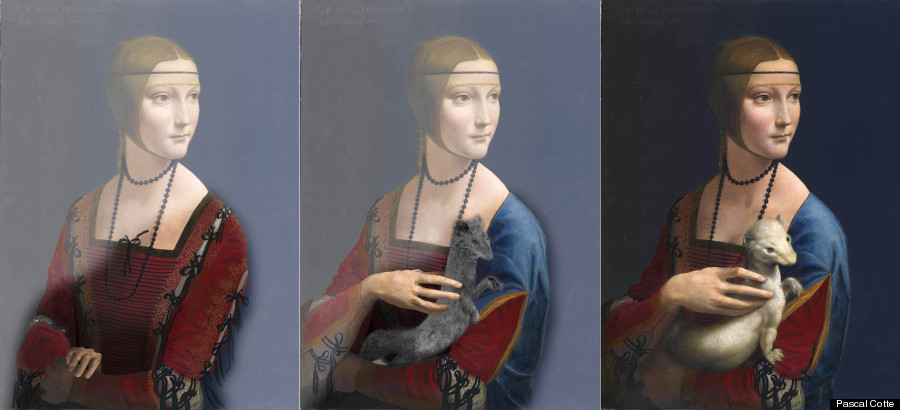Leonardo da Vinci may have been a genius, but that doesn't mean he never second-guessed himself.
In a new book, optical engineer Pascal Cotte explains how a new imaging technology known as the layer amplification method (LAM) helped show that Leonardo painted two previous versions of his "Lady with an Ermine" masterpiece before settling on the version that we know today. One version of the 15th Century artwork didn't even include the ermine at all.
"We've discovered that Leonardo is always changing his mind," Cotte, CTO of the Lumiere Technology company in Paris, told BBC News. "This is someone who hesitates -- he erases things, he adds things, he changes his mind again and again... The LAM technique gives us the capability to peel the painting like an onion, removing the surface to see what's happening inside and behind the different layers of paint."

The three phases of Leonardo da Vinci's "Lady with an Ermine" painting. Leonardo first painted the portrait without the ermine, and later added in two different versions of the animal. Credit: © Pascal Cotte
The LAM technique involves using the reflection of light to reveal images in different layers of paint, according to a statement from the company.
"It tells us a lot more about the way Leonardo's mind worked when he was doing a painting," Martin Kemp, emeritus professor of the history of art at the University of Oxford, told BBC News. "We know that he fiddled around a good deal at the beginning, but now we know that he kept fiddling around all the time and it helps explain why he had so much difficulty finishing paintings."
As for the woman depicted in the painting, experts have long believed it to be Cecilia Gallerani, who was the mistress of Ludovico Sforza, the Duke of Milan. According to the Wall Street Journal, just before this portrait was painted, Sforza was awarded the insignia of the Order of the Ermine by the King of Naples, becoming known as "l'Ermellino." Scholars believe the ermine symbolizes the Duke, or serves as a visual pun on Cecilia's surname (ermine in Greek is galay.)
Cotte's book, "Lumiere on the Lady with an Ermine," was published on Sept. 1 and is available on Amazon.
